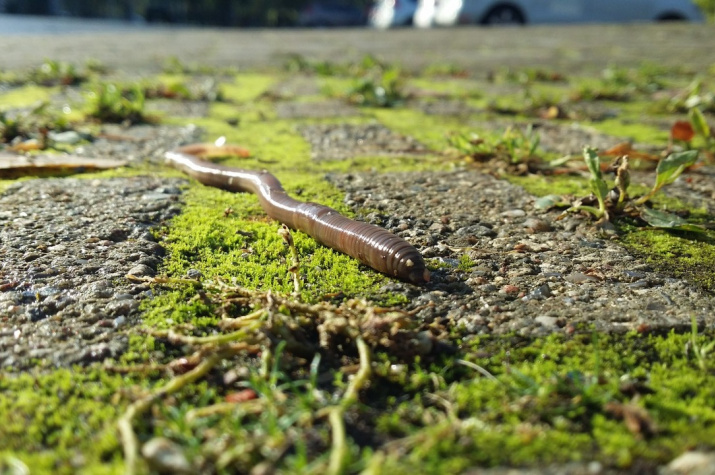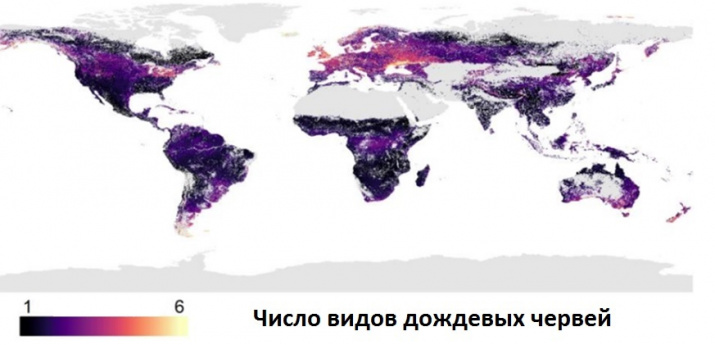Scientists have created the world's first global earthworm biodiversity map. The employees of the Severtsov Institute of Ecology and Evolution of the Russian Academy of Sciences , the MSU Faculty of Geography, the Institute of Physical and Chemical Problems in Soil Science of the Russian Academy of Sciences, and the Institute of Biological Problems of the North of the Russian Academy of Sciences took part in the map`s development. The world's largest earthworm database includes 6928 locations in 57 countries.
Earthworms are found in many types of ecosystems, and live on all continents except Antarctica. With the exception of deserts and too humid and acidic environments, these animals largely determine the functioning of ecosystems. They mix the soil and mineralize plant debris, providing the entire ecosystem with nutrients and improving the availability of moisture. In addition, earthworms are involved in carbon storage, mitigating climate change concequences, or in seed dispersal.
"Earthworms are very important "ecosystem engineers", which is also reflected in the large stock of biomass of earthworms, which is usually larger than the biomass of all mammals living in the same area," said a participant in an international study, head of the Laboratory of Soil Biogeography of the MSU Faculty of Geography, Konstantin Gongalsky.
The working group included 140 researchers from around the world. These are scientists from the German Center for Integrative Biodiversity Research (iDiv), and the University of Leipzig, as well as Russian specialists. The participants in the international scientific group sought to create a global map based on the most complete data on the diversity, number and biomass of earthworms. Data on the diversity, number and biomass of animals was obtained in an international study published in the “Science” journal.
As a result of the research, specialists were able to find out that in moderate latitudes the local diversity of earthworms is higher than in the tropics. In addition, they determined that global climate change could lead to significant changes in earthworm communities around the world, threatening many of the functions they perform.
According to scientists, the largest variety of earthworms was found in Europe, the northeastern United States and New Zealand. Researchers also found that the number of species of earthworms is largely dependent on climatic indicators related to rainfall and temperature.
"The results of the study are important for the conservation of biodiversity on the planet. Focusing only on terrestrial diversity can lead to insufficient protection of earthworms. Thus, for full assessment it is necessary to include soil biodiversity, which will allow conservationists to determine the true hot spots of biodiversity on the planet," noted Konstantin Gongalsky.


